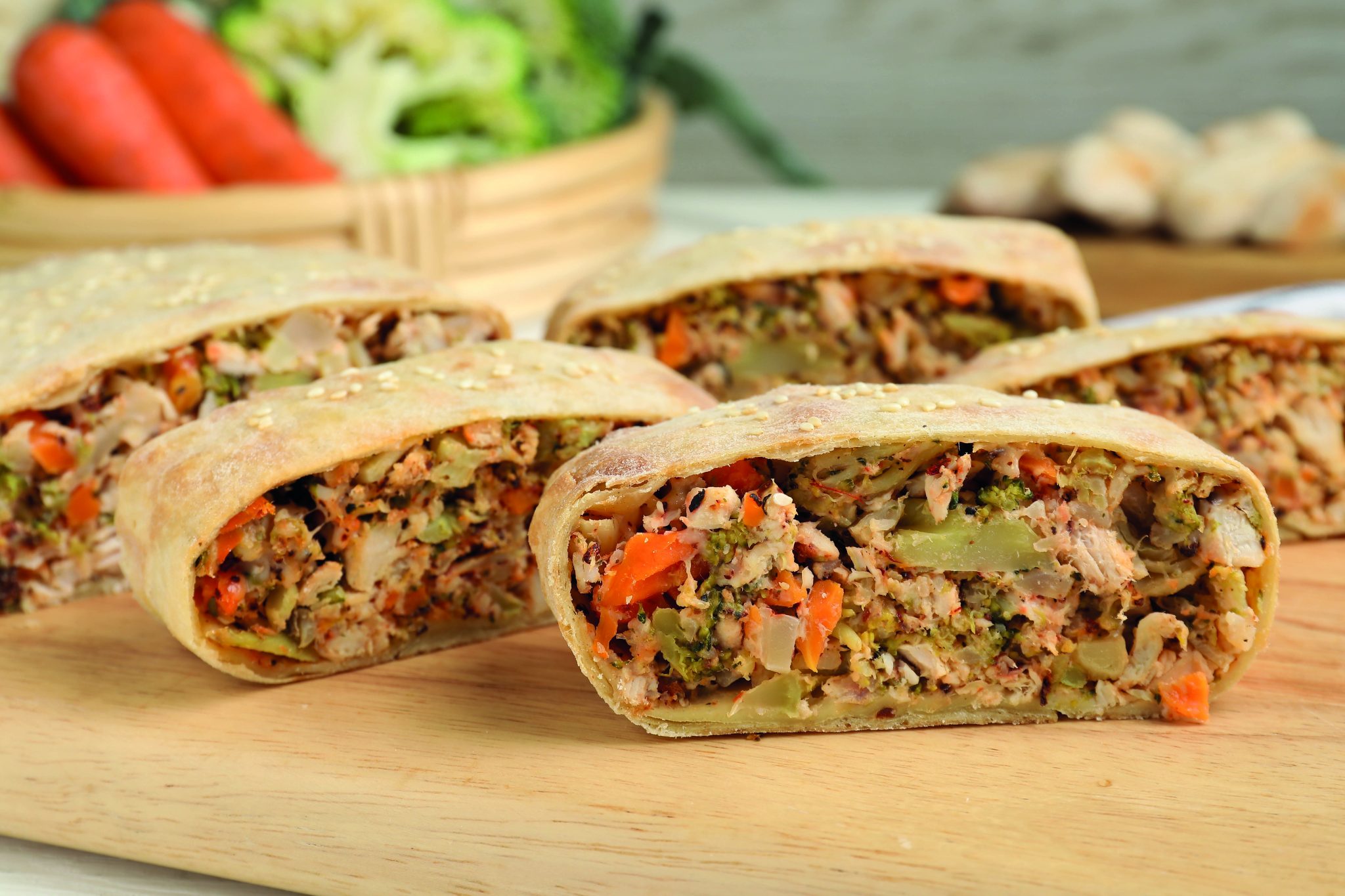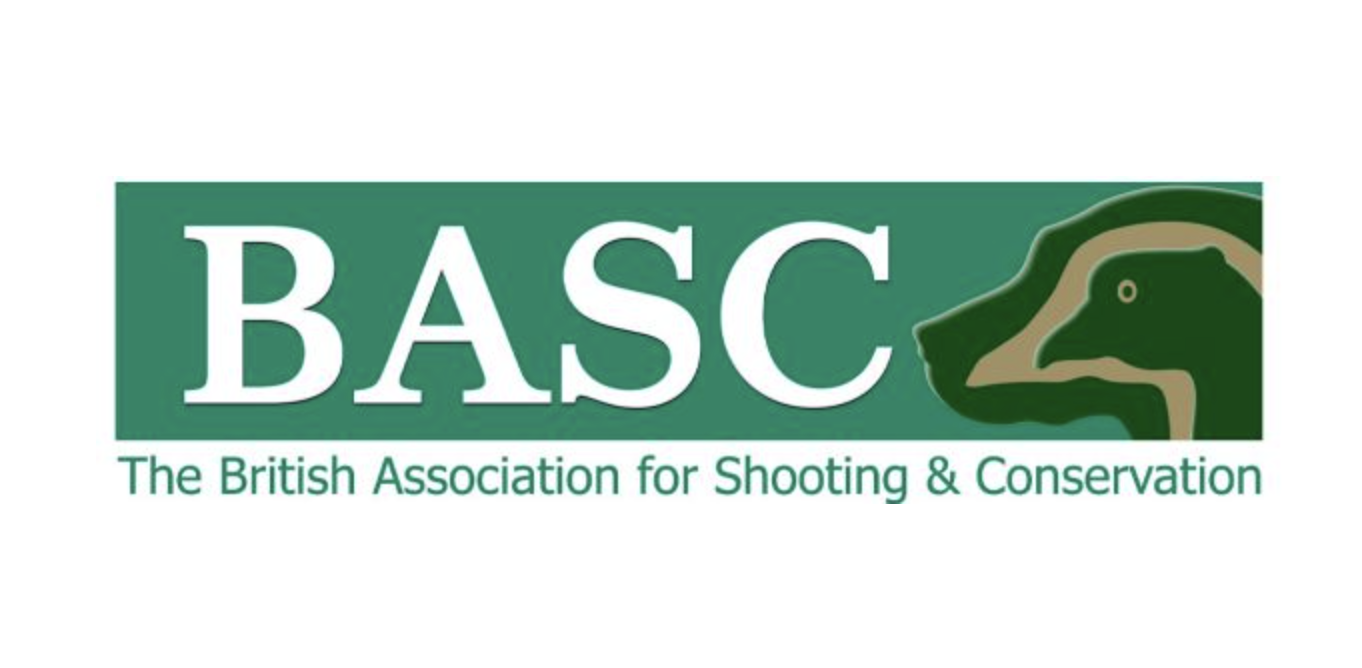Win CENS ProFlex DX5 earplugs worth £1,149 – enter here
Crossbreed gundogs: the rise of the working mongrel
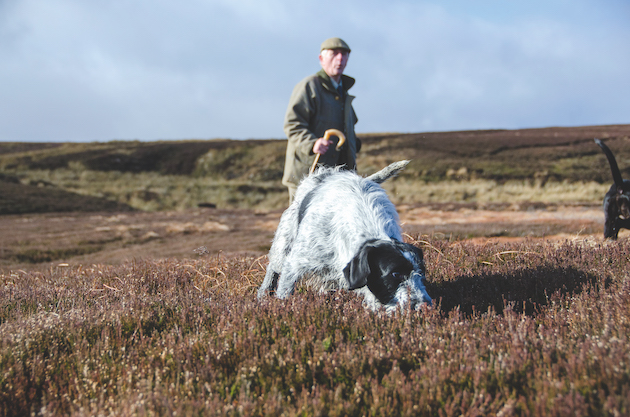 Wire Haired German cross English Springer Spaniel
Wire Haired German cross English Springer Spaniel
Pennine pointer. It’s not a breed recognised by the Kennel Club and it’s not really a breed at all (like all crossbreed gundogs), but it is a tough, all-round gundog that has been produced by gamekeepers working on the grouse moors of the Pennines.
They wanted a dog that was happy to work in the most challenging of conditions and one that could hunt, point and retrieve. There were plenty of existing options open to them — why not a Hungarian wirehaired vizsla, for example? However, they were after something different and that’s what they have achieved.
As far as I can gather, the one essential for a Pennine pointer is German wirehaired pointer (GWP) blood. The GWP is the most popular breed of working gundog in its native Germany but, perhaps surprisingly, it was its shorthaired cousin that first became established in this country.
Though a few were imported after World War II, it wasn’t until the 1970s that these dogs became established in the UK, with the German Wirehaired Pointer Club formed in 1976.
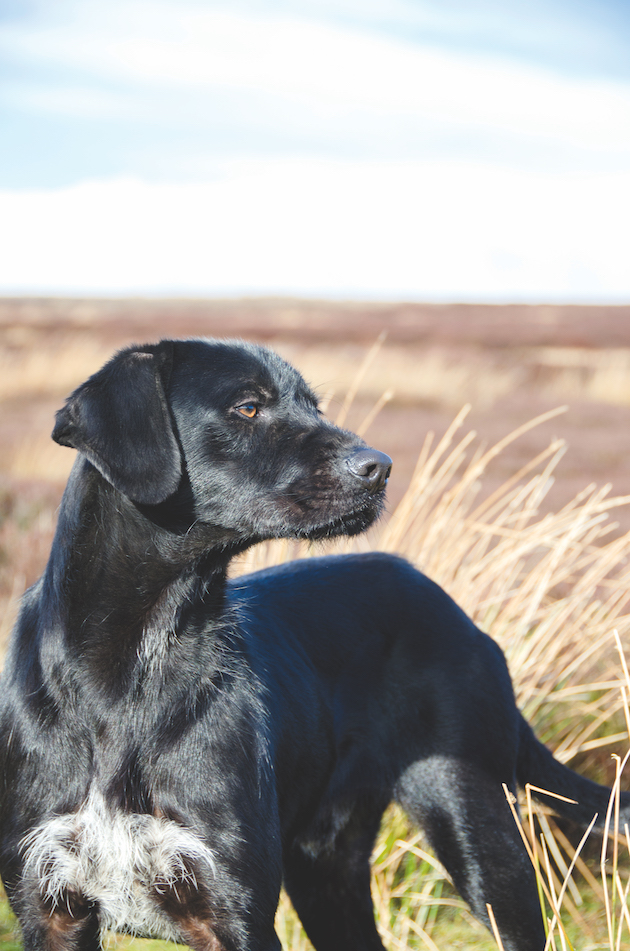
A German pointer crossed with a labrador
Crossbreed gundogs
The GWP has never gained the same popularity on the show bench as the German shorthaired pointer, or the Weimaraner, which is no bad thing, as the breed remains what it has always been — one of the hardiest of gundogs with the ability to do anything, from retrieving a partridge to holding a wounded wild boar at bay.
In its native country, the GWP is valued for its ability to track big game, and it is expected to be able to despatch a wounded fox or marten. It was its ability to work whatever the weather that first appealed to the grouse keepers on the high Pennine moors, where the weather in early October is often more challenging than a freezing January day in Somerset or Sussex.
However, even though the GWP proved to be a courageous worker on the moors, the keepers wanted something slightly different. Hunting, rather than retrieving, is the GWP’s strength, so why not cross one of these pointers with a labrador, or perhaps an English springer, to get a dog that combines the best traits of both breeds?
There was no shortage of either spaniels or labradors to cross the GWPs with so the Pennine pointer was born.
Crossing two breeds isn’t quite as straightforward as it may sound. There’s no difficulty persuading one to mate with the other, but outcrosses are unpredictable. It’s quite possible, even probable, to end up with a mixture of puppies that have the worst traits of both breeds, not the best. It’s always something of a gamble, but this is how all breeds were established in the first place.
One of the best examples of breed creation is the Korthals griffon. This HPR was created by a Dutchman, Eduard Karel Korthals, in the last quarter of the 19th century.
The Korthals griffon is widely recognised as a superbly versatile gundog
Korthals wanted a versatile hunting dog. He regarded the existing British breeds as too fast, the continentals too slow, so sought to combine the two in a tough, adaptable animal. Thirty years of rigorous selective breeding led to a breed standard that hasn’t been changed since he wrote it.
He bred 600 dogs, but only kept 62 and these are the ancestors of the breed we know today. You can find Korthals griffons throughout Europe and even the US, but France has become their true home, where they have a considerable following among chasseurs. Around 1,200 puppies are registered annually, with the majority going to shooting homes.
The Korthals griffon is one of the finest examples of breed creation, taking 30 years to reach the breed we know today
Breed standard
The continentals take gundog breeding seriously, with no litter of puppies being bred without the approval of the local breed master. There is no such thing as a show or working strain of Korthals griffon.
All the dogs bred are expected to be able to work and they have to conform to the breed standard before being allowed to enter competitions. As a result, the modern Korthals griffon looks almost identical to the photographs of the dogs pictured alongside Eduard Korthals more than 100 years ago.
Korthals culled the puppies he bred that failed to match up to his expectations and he didn’t hesitate to line breed from those he liked. It was a ruthless approach, but was clearly successful.
It’s not a method that has been copied by the breeders of Pennine pointers. Culling healthy puppies may have been acceptable 150 years ago but it’s not today and we no longer believe in mating siblings or dogs that are closely related. Thus the Pennine pointer has become a type rather than a breed. You can’t look at one and identify it instantly with any certainty, as there’s still a lot of variety.
One of the reasons for this is that, while the majority of crosses have been with labradors, there have been successful matings with English springers, too.
Great stamina
A few years ago, I discussed crossbreed gundogs, mainly the Pennine pointer with fellow Shooting Times contributor Lindsay Waddell. He was then headkeeper at Raby Castle, one of England’s premier grouse moors, and working a GWP crossed with an English springer.
He said: “The attraction of these wiry crosses is that they are robust and have great stamina thanks to their hybrid vigour. They are also very intelligent, though the problem can be that they think too much. If it’s a good dog, it’s a good dog, regardless of whether it has papers.”
Hybrid vigour, coupled with intelligence — what’s not to like? Outbreeding also makes dogs less prone to the hereditary diseases that have become such a problem today in labradors, so there’s a lot to be said for it, even if the Kennel Club doesn’t approve.
The cockapoo is an example of a hugely successful cross, producing healthy dogs with heaps of personality
It’s one of the reasons why the modern trend for so-called designer dogs has proved so successful. I suspect that the enormous popularity of the cockapoo, for example, is because these dogs not only look so appealing, they tend to be healthy dogs with lots of personality. Many old-school dog breeders remain dismissive of the cockapoo, saying it’s no more than a mongrel, but that’s unimportant to most people.
Pennine pointers are mongrels, too, but again that hardly matters to their owners. They may not be able to trial them or take them to Crufts, but not many keepers have the time or inclination for such activities. It will be interesting to see how long it takes for these dogs to spread from the hills to lowland shoots. I’ve yet to meet one away from the Pennines, but it can only be a matter of time.
The Pennine pointer is one of the best examples of a new type of purpose-bred gundog, but it’s hardly the only one. Some years ago, I came across so-called chocolate-drop spaniels, bred by a Welsh gamekeeper and his wife. They were a cross between a Sussex spaniel and a liver-coloured cocker, a crossbreed gundogs combination that produced great beating dogs.
Sussex spaniel purists were appalled at the cross and wanted nothing to do with it, but it showed that there could be a bright future for the Sussex spaniel, the most inbred of our native gundogs, given a suitable influx of fresh blood.
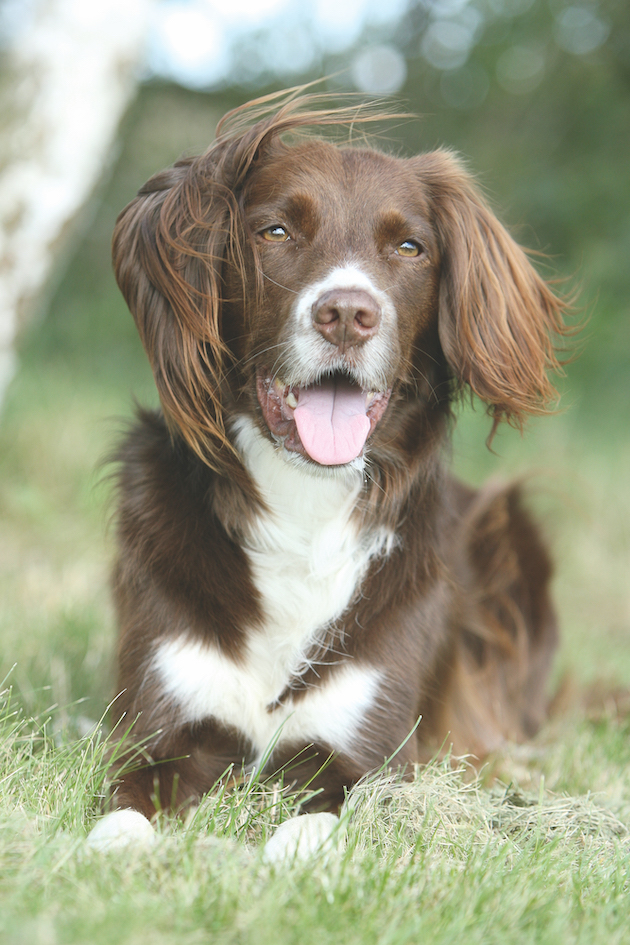
A sprollie, or English springer spaniel crossed with a border collie, creates an attractive mix
Border collie
One of the most interesting crosses was one I came across in Norfolk some years ago — a black-and-white working English springer crossed with a border collie. Bred deliberately to work to the gun, these were handsomely marked, attractive dogs. Their breeder insisted they retained the hunting and retrieving abilities of their spaniel dam, but had the intelligence of their collie father. Looking at them, it was easy to believe the English springer may well have a touch of collie in its distant ancestry.
What you call a collie-springer is up to you but I suggest a sprollie. It’s a mix that works well and I’m surprised it hasn’t been bred more frequently. It would be fascinating to know whether sprollies make better gundogs than sheepdogs, or vice versa. They have the potential to be highly trainable and talented agility dogs.
The 19th century was a time of innovation and experimentation in the dog breeding world, while the 20th century was one of consolidation and refinement. The 21st century looks like witnessing a much more exciting phase. I welcome the Pennine pointer and similar cross-breeds.
Related Articles
Get the latest news delivered direct to your door
Subscribe to Shooting Times & Country
Discover the ultimate companion for field sports enthusiasts with Shooting Times & Country Magazine, the UK’s leading weekly publication that has been at the forefront of shooting culture since 1882. Subscribers gain access to expert tips, comprehensive gear reviews, seasonal advice and a vibrant community of like-minded shooters.
Save on shop price when you subscribe with weekly issues featuring in-depth articles on gundog training, exclusive member offers and access to the digital back issue library. A Shooting Times & Country subscription is more than a magazine, don’t just read about the countryside; immerse yourself in its most authoritative and engaging publication.




